What Are JP Drains?
Surgical drains are essentially tubes that provide a means for fluid to exit from a surgically created space. In short, they can reduce the risk of fluid accumulation that can occur as a consequence of a variety of surgical procedures. However, they do not completely prevent that risk from occurring. Furthermore, after they are removed from the site, fluid can still accumulate to the point of being a problem.
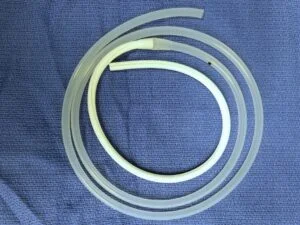
Photo 1. Jackson-Pratt Drain (JP Drain)
One of the most commonly used drains in a variety of plastic surgery procedures is called the Jackson-Pratt drain – or JP drain, for short (Photo 1). As drains go, they are very useful, effective and relatively patient friendly.
The drain is connected to a container, known as a bulb (Photo 2), which allows for the collection of the fluid in a closed system. This makes it easy to measure and record drainage amounts – necessary for evaluating progress and determining when the drains are no longer needed.
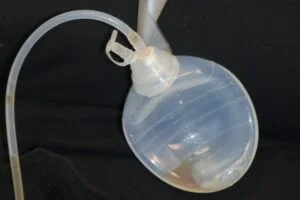
Photo 2. Bulb connected to drain
Are Drains Necessary for My Top Surgery?
JP drains are used in most primary FTM and FTN top surgery procedures such as the double incision free nipple graft, keyhole and concentric circle approaches. However, they are virtually never needed in revisions of top surgery results.
Without the drains placed at the time of surgery, there is a significantly greater risk of abnormal fluid accumulation on one or both sides of the chest that will need an intervention of some sort. This can involve placing drains in the office or at a surgical facility – resulting in another cost and anesthesia requiring procedure – and inconvenience.
The fluid can also be serially aspirated in the office. This means that needles are inserted into the fluid pocket(s) in the office two or more times a week until the body ultimately absorbs this fluid on its own without re-accumulation. Sometimes this process can take several weeks or more to finally resolve. This is both inconvenient and not exactly pleasant.
Some techniques have been touted to preclude the need for drains but these have their own significant issues including relating to effectiveness.
How Do I Record Drainage?
The fluid exiting from the drain into the collecting bulb needs to be emptied and measured somewhat accurately for optimal usefulness. How is this best done?
- First, you need to wash your hands well, preferably with an anti-bacterial soap.
- Next, the cap from the drain bulb is opened and the contents of the bulb are poured into a relatively small measuring cup, marked in milliliters (or cc’s). This cup is often provided postoperatively by the surgery center or hospital.
- Read the drainage amount in milliliters (mL) and record on a chart – listed by date and time (see below). Ideally, 24 hour totals should be recorded for each side.
- Squeeze the bulb, removing the air and creating a vacuum, and then replace the cap back on
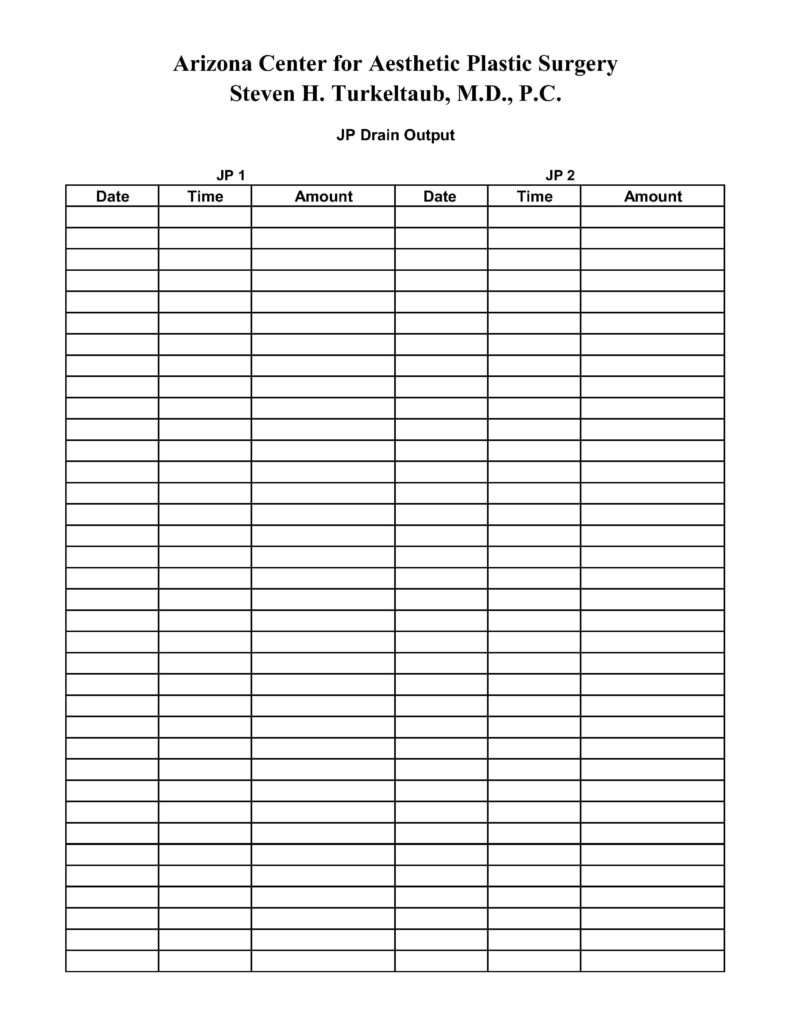
For the first few days after surgery, this may need to be done several times a day. As the amount of drainage subsides, this may then only need to be done once or twice a day.
A chart can be constructed listing dates in one column and drainage amount in the other columns as noted above. Some facilities do conveniently provide a chart that makes this quite easy. If you would like a pdf of the above chart, which would be useful for your top surgery, click the following hyperlink: JP Drainage Chart
How Do I Care for My Drain?
Keep the area around the drain site in the skin clean. A sterile gauze can be placed around the drain here. The site can be cleaned with some rubbing alcohol as needed.
Make sure that there is no tension on the drain in order to both minimize any discomfort and reduce the risk of it getting pulled out accidentally. This can be done by securing the bulbs with safety pins to your clothes, such as jeans, or in a garment with some slack on it.
It is very important that the drains are well secured, covered and protected from the outside environment. They do have a way of finding door handles and other projecting objects that can result in their inadvertent and untimely removal.
How Long Are My Drains In For?
The drainage amounts for a 24 hour period per each side and the amounts over a few days will determine exactly when the drains will be removed. On average, they are left in for around ten days to two weeks. Some can be removed sooner whereas a small percentage have to be left in for up to three weeks or more.
Can I Go to Work or School With My Drains?
In most situations, you absolutely can go to work or school with the drains still in place. Of course, there are some exceptions. If you have any questions about this, ask!
You should not be engaging in very vigorous activities with the drains in place as, among other issues, this can increase the probability that they will need to remain in longer. They can be covered with loose fitting clothing that can help both to conceal their presence from others as well as protect them from accidental environmental trauma (Photos 3 and 4).
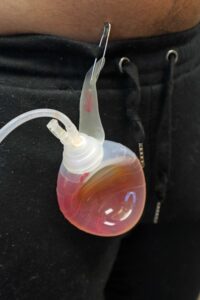
Photo 3. JP bulb attached to pants with a safety pin.
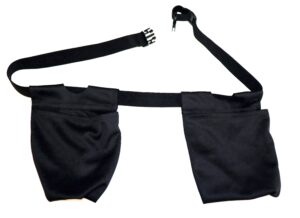
Photo 4. JP bulb holding pouches. Can be worn under clothes
Does It Hurt When My Drains Are Removed?
The best way to minimize the discomfort experienced with drain removal is to make sure that your plastic surgeon and assistants are all in a good mood.
Donations of milk chocolate, Starbucks coffee or other tasty treats can surely maximize your chances for an uneventful, reasonably pleasant drain removal experience.
Just kidding!
In general, there is minimal discomfort with the removal of the JP drain – and it is very brief.
What Happens to the Skin Opening After the Removal of My Drain?
After the drains are removed, it can take a few days for the skin opening to seal closed. There can also be some drainage until that happens. Because of this, gauzes can be secured over the openings and changed daily and as needed until there is no more drainage.
The Bottom Line with JP Drains
Though at times the drains can be less than pleasant, they definitely serve a very important purpose. However, we also want to get them out as soon as is clinically prudent.
By following the general post-surgical guidelines and managing the drains properly, you can reduce the likelihood that they will overstay their “welcome”.
Contact Us
To schedule your consultation for gender affirming top surgery with Dr. Steven Turkeltaub, please call the Arizona Center for Aesthetic Plastic Surgery at (480) 451-3000 or contact us by email.
Steven H. Turkeltaub, M.D. P.C.
Scottsdale and Phoenix, Arizona





